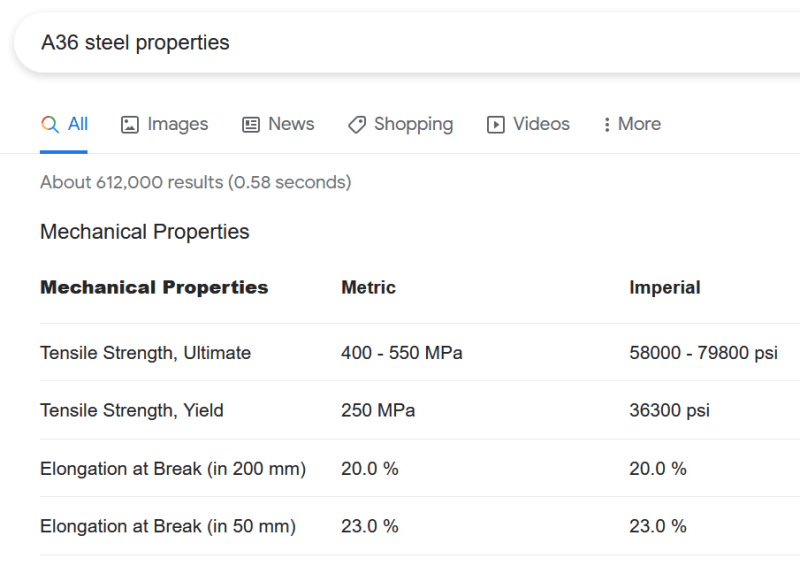kaffy
Mechanical
- Jun 2, 2020
- 191
Good Evening fellow engineers,
I am working on a project with a36 beam. I know that tensile yield stress for a36 is 36000 PSI and based on steel designer handbook shear yield stress is 0.57 of that of tensile yield which makes it *36000 = 20520 PSI. Based on Matweb data, the compressive yield strength of a36 is 22000 PSI.
Now here is my question.
During Bending, top layers are in compression, bottom layers are in tension and there is a shear force as well. So my question is while calculating the section modulus what allowable stress I should use. Is it 22000 PSI, 36000 PSI or 20520 PSI?
In ASME code B44, It just says stress should not go beyond 88/ of yield stress(doesn't say which). I could just use 20520 PSI but I do not want to be overdesign it. Can anybody please enlighten me?
Also, my understanding is that if I am designing a column, I will use 22000 PSI as my allowable stress, on Something with tension, I will use 36000 PSI. On shear only, it will be 20520 PSI. Am I doing it right?
Thank You
I am working on a project with a36 beam. I know that tensile yield stress for a36 is 36000 PSI and based on steel designer handbook shear yield stress is 0.57 of that of tensile yield which makes it *36000 = 20520 PSI. Based on Matweb data, the compressive yield strength of a36 is 22000 PSI.
Now here is my question.
During Bending, top layers are in compression, bottom layers are in tension and there is a shear force as well. So my question is while calculating the section modulus what allowable stress I should use. Is it 22000 PSI, 36000 PSI or 20520 PSI?
In ASME code B44, It just says stress should not go beyond 88/ of yield stress(doesn't say which). I could just use 20520 PSI but I do not want to be overdesign it. Can anybody please enlighten me?
Also, my understanding is that if I am designing a column, I will use 22000 PSI as my allowable stress, on Something with tension, I will use 36000 PSI. On shear only, it will be 20520 PSI. Am I doing it right?
Thank You

